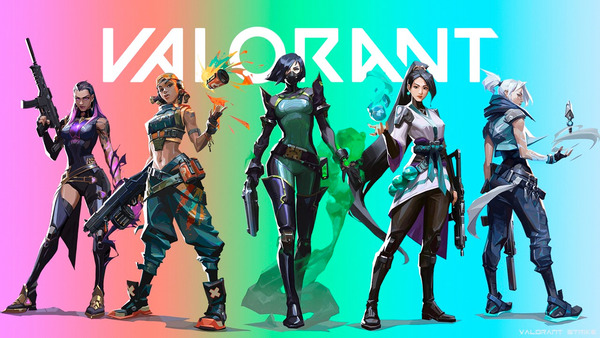Few video game franchises have had as massive an impact as Call of Duty. What began in 2003 as a World War II shooter has evolved into a juggernaut that spans multiple eras, platforms, and modes of gameplay. With billions in revenue and a dedicated fanbase that stretches across continents, Call of Duty is not just a game—it’s a cornerstone of modern gaming culture.
This article chronicles the evolution of Call of Duty from its historical roots to its current role as a dynamic, constantly evolving series. Each section reflects a pivotal chapter in the franchise’s journey, highlighting changes in gameplay, design philosophy, and market strategy.1. The Birth of Call of Duty (2003)
A New Take on World War II
Developed by Infinity Ward and published by Activision, the original Call of Duty sought to differentiate itself from other shooters by emphasizing realism, squad-based tactics, and cinematic presentation. The game’s multiple perspectives—from American, British, and Soviet soldiers—offered a more nuanced look at the global conflict.Key Features:
- Historical accuracy
- AI-controlled squadmates
- Linear, story-driven missions
2. The Expansion of the WWII Era (2004–2006)
United Offensive and Beyond
Following the success of the original game, several sequels and spin-offs were released, including Call of Duty: United Offensive and Call of Duty 2. These titles improved upon the graphics, sound, and AI, while still staying rooted in World War II.Notable Advancements:
- Enhanced visual fidelity
- Introduction of regenerating health in CoD 2
- Popularization on consoles (Xbox 360)
3. Modern Warfare Revolution (2007–2009)
A New Era in Combat
With Call of Duty 4: Modern Warfare, the franchise broke away from WWII and embraced modern settings. The move revitalized the series, introducing contemporary weapons, gear, and geopolitics. It also ushered in a robust multiplayer system with loadouts, killstreaks, and progression.Groundbreaking Changes:
- Introduction of Perks and Custom Classes
- Multiplayer leveling and prestige system
- Memorable campaign missions like “All Ghillied Up”
4. The Rise of Multiplayer and eSports (2010–2012)
Black Ops and Competitive Growth
Treyarch’s Black Ops series added Cold War intrigue, a zombie co-op mode, and expanded customization options. Multiplayer maps became more strategic, and the eSports scene began to flourish.Community Focus:
- Theater mode for sharing gameplay
- Split-screen support
- Official tournaments and competitive leagues
5. The Era of Annual Releases (2013–2016)
Refining the Formula
During this period, Activision standardized annual releases, alternating between studios (Infinity Ward, Treyarch, Sledgehammer). While some criticized the lack of innovation, others praised the polish and consistency of the releases.Key Titles:
- Ghosts: Mixed reception but strong sales
- Advanced Warfare: Introduced exo-suits and verticality
- Black Ops III: Expanded movement system and zombies lore
6. Return to Roots and Experimentation (2017–2019)
WWII and the Battle Royale Frontier
Call of Duty: WWII marked a return to the series’ origins with historical campaigns and grounded combat. Simultaneously, the rise of Battle Royale led to the creation of Blackout in Black Ops 4, the franchise’s first attempt at the genre.Major Shifts:
- Removal of traditional campaign in Black Ops 4
- Introduction of Specialists and deeper class roles
- Revival of boots-on-the-ground gameplay
7. Warzone and Modern Warfare Reboot (2020)
Free-to-Play Domination
The rebooted Modern Warfare introduced a darker, more cinematic narrative. More importantly, it launched Warzone, a free-to-play battle royale that attracted over 100 million players.Warzone Highlights:
- Cross-platform and cross-progression
- Dynamic events and map evolutions
- Regular seasonal updates and integrations with other titles
8. Integration and Live Service Model (2021–2022)
The CoD Ecosystem
With titles like Vanguard and Black Ops Cold War, Activision focused on integrating all games into the Warzone platform. Battle passes, seasonal content, and synchronized weapons created a unified Call of Duty experience.Live Service Infrastructure:
- Shared battle pass across titles
- Seasonal narrative arcs
- Community events and limited-time modes
9. Technological Enhancements and Storytelling (2022–2023)
Modern Warfare II and Beyond
The 2022 release of Modern Warfare II showcased the franchise’s next-gen capabilities. Enhanced lighting, realistic gunplay, and expansive campaign levels elevated the experience.Technical Milestones:
- Realistic recoil and animations
- Improved AI and stealth mechanics
- New DMZ mode blending PvPvE elements
10. The Road Ahead: CoD 2024 and Future Innovations
What's Next for Call of Duty?
With rumors of Black Ops Gulf War and continued Warzone expansions, the future looks ambitious. Activision is exploring ways to keep the series relevant—be it through cloud gaming, VR, or evolving narratives.Upcoming Possibilities:
- Deeper character development in campaigns
- More open-ended mission structures
- Expansion into mobile and handheld platforms






























